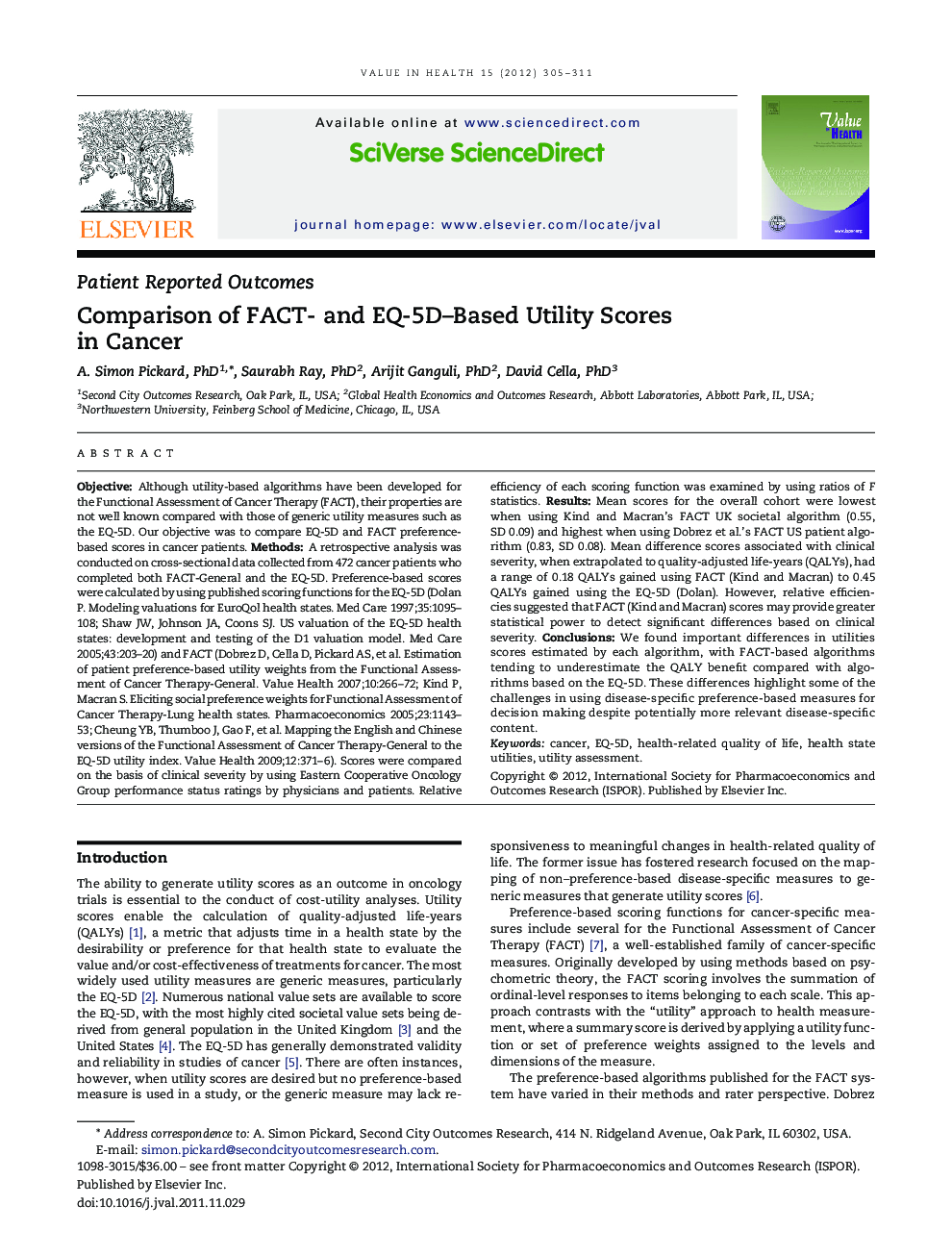| کد مقاله | کد نشریه | سال انتشار | مقاله انگلیسی | نسخه تمام متن |
|---|---|---|---|---|
| 988572 | 935351 | 2012 | 7 صفحه PDF | دانلود رایگان |
ObjectiveAlthough utility-based algorithms have been developed for the Functional Assessment of Cancer Therapy (FACT), their properties are not well known compared with those of generic utility measures such as the EQ-5D. Our objective was to compare EQ-5D and FACT preference-based scores in cancer patients.MethodsA retrospective analysis was conducted on cross-sectional data collected from 472 cancer patients who completed both FACT-General and the EQ-5D. Preference-based scores were calculated by using published scoring functions for the EQ-5D (Dolan P. Modeling valuations for EuroQol health states. Med Care 1997;35:1095–108; Shaw JW, Johnson JA, Coons SJ. US valuation of the EQ-5D health states: development and testing of the D1 valuation model. Med Care 2005;43:203–20) and FACT (Dobrez D, Cella D, Pickard AS, et al. Estimation of patient preference-based utility weights from the Functional Assessment of Cancer Therapy-General. Value Health 2007;10:266–72; Kind P, Macran S. Eliciting social preference weights for Functional Assessment of Cancer Therapy-Lung health states. Pharmacoeconomics 2005;23:1143–53; Cheung YB, Thumboo J, Gao F, et al. Mapping the English and Chinese versions of the Functional Assessment of Cancer Therapy-General to the EQ-5D utility index. Value Health 2009;12:371–6). Scores were compared on the basis of clinical severity by using Eastern Cooperative Oncology Group performance status ratings by physicians and patients. Relative efficiency of each scoring function was examined by using ratios of F statistics.ResultsMean scores for the overall cohort were lowest when using Kind and Macran's FACT UK societal algorithm (0.55, SD 0.09) and highest when using Dobrez et al.'s FACT US patient algorithm (0.83, SD 0.08). Mean difference scores associated with clinical severity, when extrapolated to quality-adjusted life-years (QALYs), had a range of 0.18 QALYs gained using FACT (Kind and Macran) to 0.45 QALYs gained using the EQ-5D (Dolan). However, relative efficiencies suggested that FACT (Kind and Macran) scores may provide greater statistical power to detect significant differences based on clinical severity.ConclusionsWe found important differences in utilities scores estimated by each algorithm, with FACT-based algorithms tending to underestimate the QALY benefit compared with algorithms based on the EQ-5D. These differences highlight some of the challenges in using disease-specific preference-based measures for decision making despite potentially more relevant disease-specific content.
Journal: Value in Health - Volume 15, Issue 2, March–April 2012, Pages 305–311
